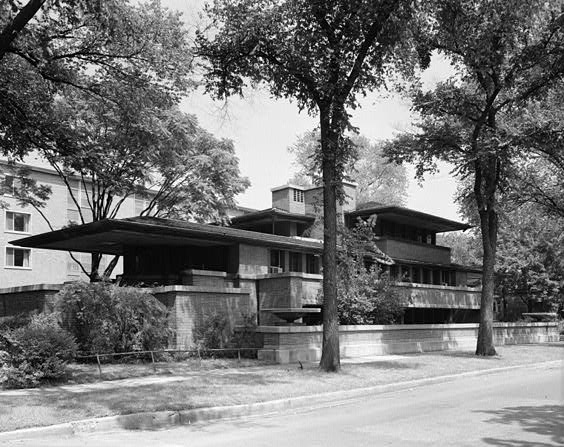"The maple wood blocks...are in my fingers to this day." (Frank Lloyd Wright)

Anna Lloyd Wright courtesy http://www.nha.org/images/hn/07summmer-wright.jpg.
When Anna Lloyd Wright was pregnant with her first child, she declared: "my first child will grow up to build beautiful buildings". She decorated the nursery with engravings of English cathedrals. At the Centennial Exhibition in Philadelphia in 1876, Mrs. Wright, a former teacher, was intrigued with the teachings of Friedrich Wilhelm August Frobel, founder of the Kindergarten movement. She purchased his geometrical shapes: a cube, a sphere and a triangle.

Memorial Hall at Centennial Exhibition in Philadelphia circa https://en.wikipedia.org/wiki/Centennial_Exposition.
It was those blocks that Frank Lincoln Wright played with for hours on end. He never forgot how much his mother believed in him and when his father abandonned the family when he was 11, he dropped the middle name Lincoln and made it Lloyd after his mother.

Frank Lloyd Wright's home in Oak Park, Illinois courtesy https://en.wikipedia.org/wiki/Frank_Lloyd_Wright.
When Frank Lloyd Wright grew up, he apprenticed as a draftsman at Adler & Sullivan. He built houses in Chicago, including a Tudor style design in the Oak Park suburb. While at Adler & Sullivan he designed projects on the side. When Sullivan found it, he considered it a breach of their contract.d Furious, Wright stormed out of the office never to return.
Wright set up his own practice in Chicago's Schiller Building for a short time. Later, he moved to the Steinway Building where he shared the space with Spencer, Hunt and Perkins. The four architects would represent the Prairie School of architecture. Wright was offered the chance to study at the Ecole de Beaux Arts for four years but he turned it down, choosing instead to embrace a new, more American type of architecture.

Robie House in Chicago courtesy https://en.wikipedia.org/wiki/Prairie_School#/media/File:Robie_House_HABS1.jpg.
In 1898, married and with an ever growing family, Wright turned his home office into more bedrooms and built a new studio attached to the house. An increasing influence on the world of architecture, Wright wrote two articles for the Ladies Home Journal: "A Home in a Prairie Town" and "A small House with Lots of Room in It".
Even though Wright was married, he had a wandering eye. IN 1903, while designing a house for Edwin Chaney, he fell in love with Chaney's wife. After a two year exodus in Europe, Chaney was granted a divorce from her husband to marry Wright. However, Wright's wife refused to grant him a divorce. In the meantime, tragedy struck in 1914 when the former Mrs. Chaney, living at Wright's resort, was murdered by a mentally ill servant.

Falling Water in Pennsylvania courtesy
Famous designs attributed to Wright in the late 1920's and 1930's were : Falling Water, Graycliff and Taliesin West. He employed the use of glass in his design of the Johnson Wax Headquarters. Wright's most famous design, however, remains New York City's Guggenheim Museum, one that he worked on for sixteen years and completed in 1959.

The Gugenheim Museum in New York City circa 1959 courtesy https://countoncross.wordpress.com/2011/10/21/the-guggenheim-museum-grand-opening-today/.
No comments:
Post a Comment